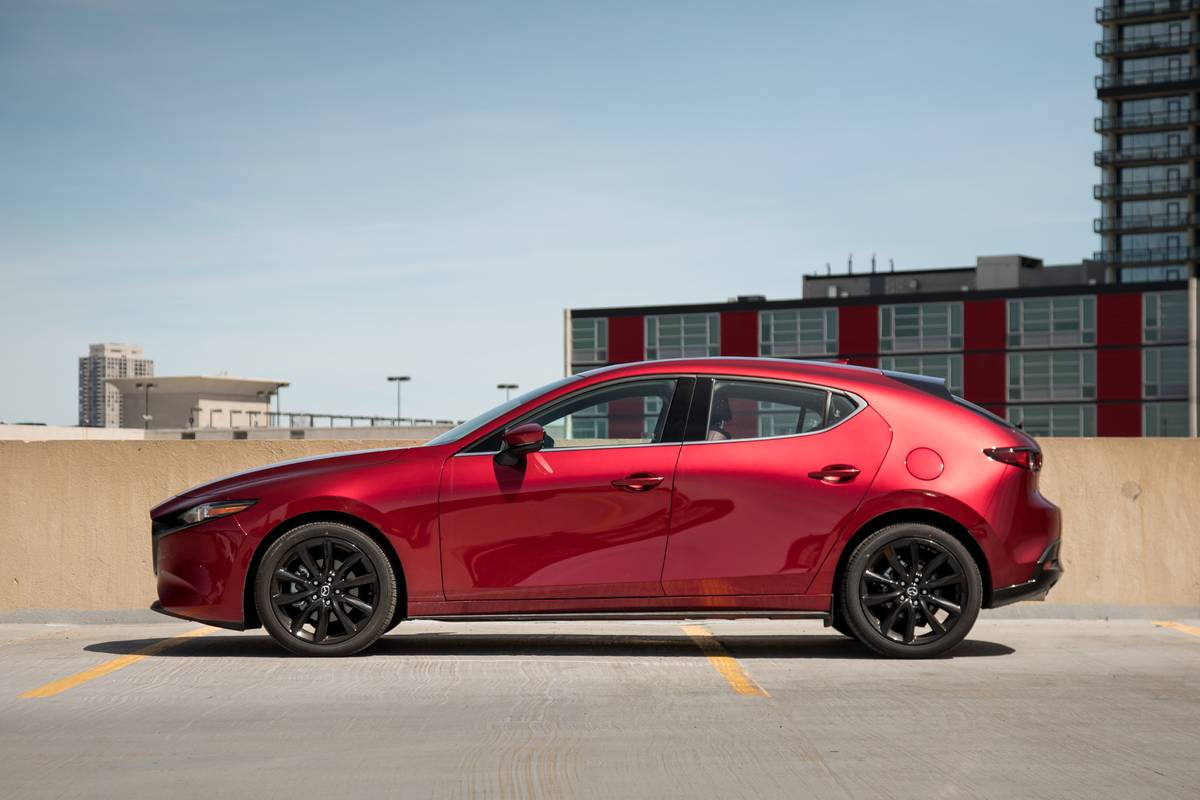Mazda3: Which Should You Buy, 2019 or 2020?

Most significant changes: Base sedan adds several standard safety features, automatic headlights and rain-sensing wipers
Price change: Base sedan is $500 higher; prices up $100 or unchanged on other models; destination charge remains $920
On sale: Now
Which should you buy, 2019 or 2020? The 2020. Price increases are modest or nonexistent, and the base sedan adds safety features that previously weren’t available.
Mazda redesigned its compact sedan and hatchback line for 2019, and it adds several standard safety features to the base sedan for 2020.
- ${price_badge()}
- ${battery_badge()}${ev_report_link()}
- ${hot_car_badge()}
- ${award_badge()}
- ${cpo_badge()}
${price_badge_description}
The EV Battery Rating is based on this vehicle's current expected range relative to the vehicles expected range when new. ${battery_badge_text}
Certified cars are manufacturer warrantied and typically go through a rigorous multi-point inspection.
This car is likely to sell soon based on the price, features, and condition.
${award_blurb}
${award_two_blurb}
Shop the 2019 Mazda Mazda3 near you


Among the newly standard features are a driver attention warning, which nudges the driver with visual and sound alerts when it detects driver fatigue or decreased attentiveness; automatic emergency front braking; adaptive cruise control with stop-and-go; and lane departure warning and lane keep assist. An automatic on-off feature for the headlights and rain-sensing wipers also are new standard features.
None of those features was available for 2019 on the base sedan (though they were standard on the others), whose starting price rises $500 to $22,420 with destination. Prices on other models are up by $100 or remain unchanged.
The Mazda3 is more sporting than most compact cars and offers a wider range of models than several competitors. In addition to sedan and hatchback body styles, the Mazda3 offers a choice of front- or all-wheel drive on both (AWD adds $1,400). A six-speed automatic transmission is standard on all models, and a six-speed manual is a no-cost option on the Premium trim of the hatchback. All models come with a 186-horsepower, 2.5-liter four-cylinder engine.
Compared to most compact cars, all Mazda3 models can be described as “premium.” Prices start at more than $22,000 (including destination) and top out at nearly $30,000 for a Premium AWD hatchback. If there’s good news, it’s that prices can’t go much higher because the only factory options are metallic and mica paint. Mazda packages the trim levels — base, Select, Preferred and Premium — on an escalating scale of features and prices with no leeway to add individual options or option groups.
The Mazda3 has decent acceleration, competent handling and strong brakes, as well as high-quality interior furnishings, but it also has several shortcomings. They include so-so gas mileage, a cramped interior and an 8.8-inch multimedia screen operated by a console-mounted controller instead of by touch, a step backward from the previous-generation Mazda3. The hatchback also has massive rear pillars and a tiny rear window that severely restrict the driver’s view.
Though the Mazda3 appeals for its styling and performance, other compact cars are available at lower prices, and Hyundai, Kia and Volkswagen provide longer warranties — and arguably greater value.

Cars.com’s Editorial department is your source for automotive news and reviews. In line with Cars.com’s long-standing ethics policy, editors and reviewers don’t accept gifts or free trips from automakers. The Editorial department is independent of Cars.com’s advertising, sales and sponsored content departments.
Featured stories




